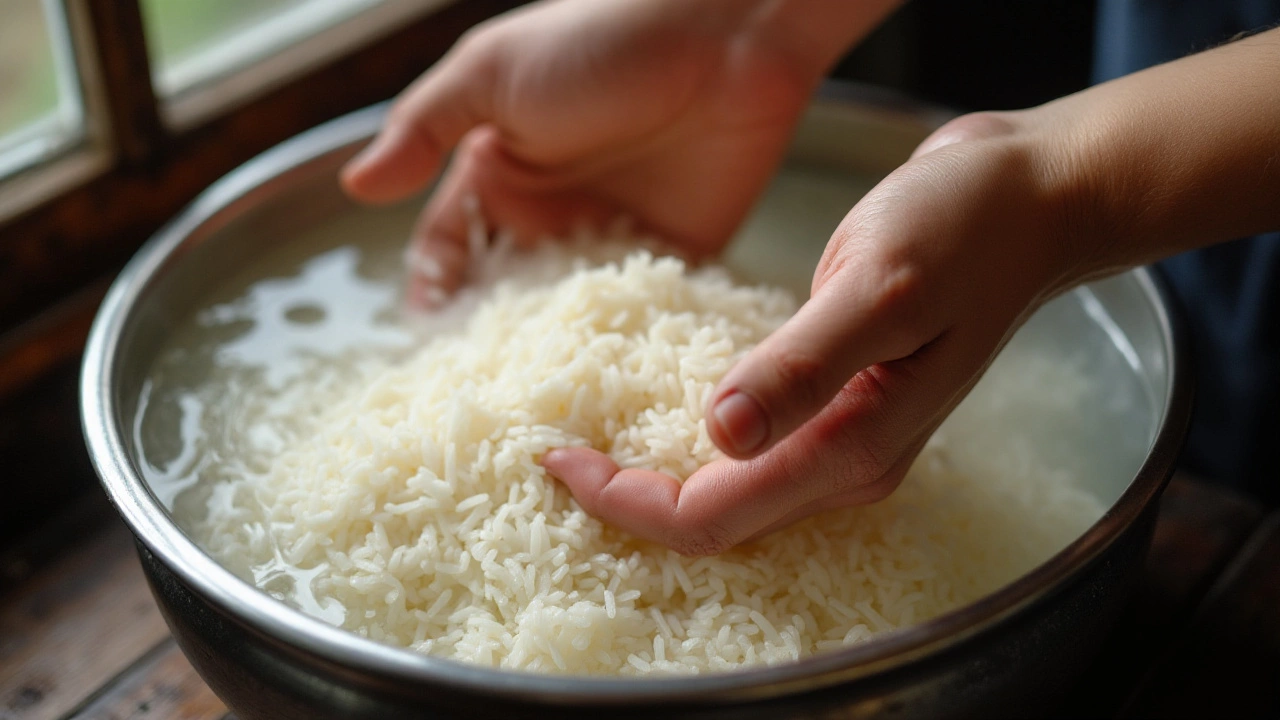Before the aroma of a warm bowl of rice fills the room, there is a simple yet crucial step often overlooked: washing the rice. This practice, rooted in both tradition and science, affects the texture, taste, and safety of the cooked rice. By rinsing away excess starch and impurities, one can elevate even humble grains to a dish of perfection. Get to know why this essential kitchen habit deserves your attention.
Rice Washing Tips: How to Clean Rice Properly for Better Taste and Nutrition
When you wash rice, a staple grain in Indian households that’s eaten daily across regions. Also known as paddy rice, it’s often coated with fine powder from milling—this isn’t dirt, but it affects how the grains cook. Skipping this step can leave your rice sticky, gummy, or unevenly cooked. Washing rice isn’t just tradition—it’s science. The goal isn’t to scrub it clean like veggies, but to rinse off surface starch so each grain stays separate and fluffy when cooked.
Many people think rinsing rice wastes water, but you don’t need to soak it for minutes. A quick 2-3 rinses under running water, swirling gently with your hands, does the job. Stop when the water runs mostly clear—not crystal clear, just not cloudy anymore. Over-washing strips away nutrients like B vitamins and minerals, especially in fortified rice. That’s why rice preparation, the process of cleaning, soaking, and cooking rice to get the best texture and flavor matters more than how long you rinse. For basmati, a light rinse is enough. For short-grain or sticky rice like Sona Masoori, you might need one extra rinse. And never rinse after cooking—that’s when the starch is already set.
Some folks swear by soaking rice before cooking. That’s fine if you’re aiming for longer grains or faster cooking, but it’s not the same as washing. Soaking helps with even cooking; rinsing helps with texture. Don’t confuse the two. Also, avoid using soap or scrubbing brushes. Water alone is all you need. If you’re using organic or hand-pounded rice, you might see tiny husk bits—that’s normal. Just rinse gently. The real trick? Use cool or lukewarm water, not hot. Hot water starts cooking the grains before they even hit the pot.
Why does this matter in Indian kitchens? Because rice isn’t just a side dish—it’s the base of dal-rice, biryani, idli batter, and even sweet pongal. If your rice turns out mushy, the whole meal suffers. Good rice washing gives you that perfect, separate grain you get in restaurants. And it’s not just about taste. Cleaner rice means less chance of grit or dust affecting digestion. It’s a small habit that makes a big difference in daily meals.
You’ll find plenty of posts below that dig into related topics—like how to store rice properly, which varieties work best for different dishes, and how water quality affects cooking. Some even talk about what to do with the starchy rinse water—it’s not waste. It can feed plants, thicken gravies, or even clean floors. These aren’t just tips. They’re small wins for smarter, more sustainable cooking.
